Game Meat: How to Offer Game Meats Safely to Your Baby
- Why game meats are more lean than domesticated animal meat...and the types of cooking methods to employ to make them safe for babies to eat
- What types of bullets to choose to help prevent lead toxicity from the meat that is then fed to babies
- How to braise elk steaks and incorporate ground game meats into recipes that babies (and the rest of the family!) will love
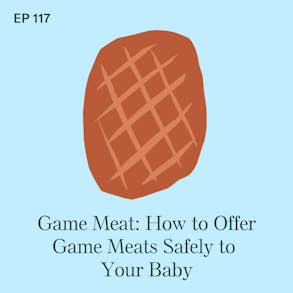
LISTEN TO THIS EPISODE
Episode Description
Is it safe for babies to eat game meat? We’re talking about venison and deer, elk, moose, wild boar and other wild animals and birds...how do you make them safe for babies to eat?
Game meat offers unique taste and texture opportunities for your baby...but there are some safety precautions to take to ensure the meat is being handled and prepared in a way that does not harm the baby.
Links from this Episode
- Baby-Led Weaning with Katie Ferraro program with the 100 First Foods™ Daily Meal Plan, join here: https://babyledweaning.co/program
- Baby-Led Weaning for Beginners free online workshop with 100 First Foods™ list to all attendees, register here: https://babyledweaning.co/baby-led-weaning-for-beginners
Other Episodes Related to this Topic
- Podcast Episode 103 Liver: How to Offer Liver Safely to Babies was mentioned in this episode and you can learn all about liver by clicking here.

Latest Episodes

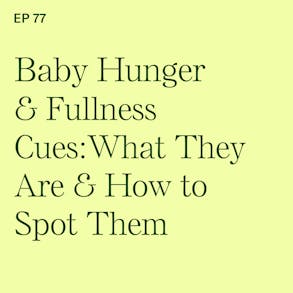
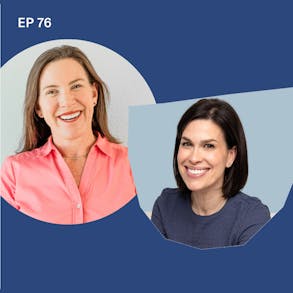
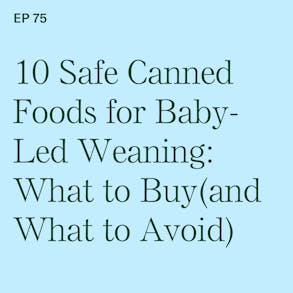


Katie Ferraro (1s):
So the high activity levels in that natural diet mean you end up with game meats that are leaner and have a lower fat content than domesticated animal meat, which matters because if you don't prepare it properly, you could end up with really tough textures that we don't feed the babies cause it's a choking risk. Hey, there I'm Katie Ferraro, registered dietitian, college nutrition professor and mom of seven specializing in baby led weaning. Here on the baby led weaning made easy podcast, I help you strip out all of the noise and nonsense about feeding, leaving you with the confidence and knowledge you need to give your baby a safe start to solid foods using baby led weaning.
Katie Ferraro (41s):
Well, hey guys, welcome back. Today we're gonna be talking about game and meat and how to offer game meats safely to your baby. Now game meats, our meats from non-domesticated, free-range or farm raised animals, wild animals and birds that are, are either legally hunted for personal consumption or reared slaughtered, and then commercially sold for food. So in north America, some common game species, and there's a lot of them too. So I was wondering, gosh, should I go item by item in this or general, and I think we've got to keep a general cause we're talking about things like bear and bison, antelope, caribou, deer, elk, moose, reindeer, wild boar, snake, alligator rabbit, squirrel, beaver, and birds, and the birds include things like pheasant or quail, wild turkey, wild geese, and duct.
Katie Ferraro (1m 24s):
So I actually got some questions in the podcast reviews asking about game meats. We thought, gosh, that's interesting. We've never done an episode on game meats. And if you guys are listeners of this podcast, if you have an idea for a future episode idea, I get all of my best episode ideas from you guys. And people leave them in the written reviews for the podcast. So if you enjoy the podcast, if you learn stuff from it, if you want to help other parents find this information, I would love to have your written review on apple podcasts. I read every single review. I really appreciate your feedback. I was laughing at one the other day, my husband was saying something about how I talked too fast and I was like, somebody left me a review that said Katie's is the only podcast I don't have to listen to on 1.2X speed cause she already talks so fast.
Katie Ferraro (2m 12s):
So thank you for the constructive feedback. I know I talk fast, but you can also slow the podcast out if you want. If you guys do want to leave a review written reviews on Apple Podcasts are the most helpful. And if you've got an idea for a future episode idea, dump it in there and I for sure will see it. So the two particular reviews that I'm talking about, we're asking about venison. So venison is a specific term commonly used to describe game meat from deer, but historically the word which is derived from the Latin, to hunt was used to define meat eaten from many hunted game animals or the beasts of chase. And that included things like elk and wild boar. So venison today, we kind of think of, you know, in terms of deer, but I need to disclose that I've never been hunting.
Katie Ferraro (2m 57s):
I have never hunted my own meat. I get some questions for parents who are out there doing it. The dads are doing it. The moms are doing. Hey, more power to you. We are going to talk a little bit about safety though, because the whole point the baby led weaning is making sure that we're giving our babies a safe start to solid foods. So before we dive into the safety, if you're wondering like from a nutrition standpoint, what's the deal with game meats, rich in protein, good sources of iron tend to be lower and total fat and saturated fat. So let's think about the fact that these, like you got wild a animal running around, it's getting a lot of exercise, right?. And in general, if you think about domesticated animals, they live on a diet of grain or corn and they have like a pretty low mobility rate, right?
Katie Ferraro (3m 37s):
Like the goal is to fatten these animals up as fast as possible, get them to slaughter and sell them by the pound for greater profit. Wild animals, on the other hand, they roam freely and they consume natural foods. So the higher activity levels of these wild animals and because they've got like a very natural diet, not just grain or corn pumped into them daily means we end up with an animal that has leaner meat and a lower fat content. So for example, if you compare three ounces of venison with three ounces of beef, three ounces of venison only has three grams of fat. Whereas three ounces of beef has more like 18 grams of fat. And you might be like, who cares? I'm not here to count calories. You should care because leaner meats have a tendency to be tougher.
Katie Ferraro (4m 21s):
And if the meat is tougher than it will be harder for your baby to chew and swallow and we do not want to feed toughed meats to babies. That doesn't mean we can't feed game meat to babies. We just need to be intentional about how we cook and prepare those meats. So how do you cook game meat in order to make it less tough? Three recommendations, braising, slow cooking and pressure cooking. So let's talk about braising. Braising involves searing and slow cooking the meat in liquid. Let's say you have an elk steak. Okay. You can preheat your oven 325 degrees Fahrenheit works great taking a dutch oven or an oven safe pot and on your stove top sear the meat in the pot.
Katie Ferraro (5m 4s):
So this produces like the brown bits of flavor that kind of stick to the bottom of your pot. It helps kind of lock in the flavors the way I think about it. So you sear your meat on each side, remove from the stove top and then put some of your cooking liquid in there, maybe stock or wine or water for using stock for baby led weaning, just make sure you're using no added salt or a very low sodium broth. Wine is perfectly fine to use. It does not intoxicate your baby when we divided over the portions at the baby is eating. Water works well, also you can season the water can always add salt a little bit later for yourself, but this cooking liquid helps to keep the meat moist throughout that long cooking process. So you take your pot, put your meat back in it with the liquid on top of it, put it in your oven.
Katie Ferraro (5m 44s):
Okay. Oven around 325, depending on the size of the meat. It depends how long you'll need to cook it. So for braising, you can cook your meat in the oven without the lid on, you can also add the lid if you want it kind of steams that you just want to make sure that the liquid doesn't evaporate totally because when we serve babies meat, we want to be fork tender, soft and shreddable and you do want to serve it with the liquid. So take that braising juice out at the end, pull the cooked meat into strips about the size of your adult pinky finger, ladle some of that sauce or juice back onto the meat and serve the strips of meat with the liquid. And you can also slow cook meat, kind of similar to brasing. You can brown the meat and slow cook it in liquid. You can do that on your stove top, or if you have like an instant pot or a multi cooker, you can slow cook, it just takes a lot longer.
Katie Ferraro (6m 30s):
You can accomplish the same thing by pressure cooking as well. So pressure cooking is a great way to make tough cuts of meat tender in a short period of time. So instead of a meal or a cut of meat that might take hours to slow cook pressure cooking speeds up the process usually to less than 30 minutes. You know, any recipe that involves braising or slow cooking is a great choice for pressure cooking. Some people just don't kind of like the resultant texture after pressure cooking, everything at all kind of seems to have the same exact texture, but babies don't know. And the texture that we end up when we pressure cook meat, which is nice and soft and shreddable, if it has had enough liquid and enough time to cook is perfectly safe for babies to eat.
Katie Ferraro (7m 10s):
You just want to make sure again, that you're serving soft shreddable strips of meat, along with the juice that works for baby led weaning.
Katie Ferraro (8m 49s):
And something else to consider when we're looking at game meat compared to traditional domesticated animals, when it comes the flavor, there's definitely a difference there, right? If you've ever, if you're just a beef fan, if you've ever had, you know, grass fed beef versus corn fed beef, they taste different. Some people actually don't like the taste of grassfed beef is, oh, it tastes like it's more gamey. So when people describe that taste of gamey, we're thinking about like the wild game, like deer and elk and antelope they're lean, of course, because of their active lifestyle in that natural diet, they don't have the marbling of fat that, you know, domesticated beef would have. And as a result, they end up tasting gamey or they're relying on vegetation to provide the food.
Katie Ferraro (9m 32s):
So the taste might be different, but it's a great idea to expose your baby to a variety of different tastes and gamey is another way you can do that. All right. What do we need to be aware of when it comes to serving game meats? Okay. So a different level of concern. I know you're probably like, oh, she's just going to talk about choking risk. That's all she ever talks about when it comes to safety. Not in this episode, we are talking about the potential for lead toxicity. Alright, deer venison that are shot with bullets containing lead can have particles of lead remaining in the meat that oftentimes can not be seen or felt an even ground venison tends to have more lead fragments than steaks or chops because the little pieces of led get ground up in the meat during the grinding process.
Katie Ferraro (10m 17s):
So lead even in very, very small amounts is a serious health risk for children and for pregnant women. So we want to ensure we're minimizing lead risks to the greatest extent possible. So for ammunition choices, the best would be copper bullets or lead free bullets that leave no lead in the meat. The worst type of ammunition would be the rapidly expanding bullet, like a ballistic tip or a soft point. Now rinsing your carcass alone does not necessarily remove the lead fragments can actually spread the lead fragments to the other parts of the animal. There's one study in 2009, where pigs who were fed deer meat that was harvested with lead ammunition. The researchers observed increasing blood lead concentration levels within days.
Katie Ferraro (11m 1s):
And they said in the summary concluding that human risk exposure to bioavailable led from bullet fragments when they eat venison from deer killed was standard led based rifle, bullets and processed under normal procedures could be potentially dangerous. Now, while most game meats have been produced from healthy animals, there are some game meats that have raised public health concerns because the meat might Harbor infectious agents that are not destroyed by the processes of smoking or salting or brining. All of which to be honest are not really appropriate for baby led weaning because they involve too much salt, but, there is the potential for those pathogens to cause human disease. So game animals, especially deer known to carry e-coli, game birds like Allbirds known to possibly carry salmonella.
Katie Ferraro (11m 45s):
And so in this case, as whenever we're dealing with a potentially hazardous food like meat handling and cooking, so handling properly and cooking to the correct temperature is very important. So how can you make game meat safe for babies, best to use non-lead ammunition, especially if you're feeding game meat to children and then not to eat the organs from any wild game because lead and other chemicals tend to collect in the organs. And I have a separate episode that has more information about organ meat in particular liver. If you want to check that out just for some additional tips about the limitations on safely feeding babies liver, go listen to episode number one zero three, it's called liver. How to offer liver safely to babies.
Katie Ferraro (12m 28s):
Game meats that have been killed with copper bullets or lead free bullets leave no lead in the meat. So that's what we're looking for. So you also, of course, always want to make sure that the game meat you're offering is moist and tender for the baby to eat by cooking with the appropriate methods like braising or slow cooking or pressure cooking. If you have ground game meat, you can work it into a recipe or you can serve it in the manner that you would serve. For example, ground beef to your baby. And if you're looking for ideas on how to do that, I have a blog post for you all about how to safely serve ground beef to your baby for baby led weaning. This is a blog post called five ground beef recipes for baby led weaning.
Katie Ferraro (13m 10s):
And if you have ground elk or ground venison, you can make that work using those recipes as well. And so I'll link to those in the show notes for this episode, which you can catch@blwpodcasts.com forward slash one, one seven. So there you have it just a little bit about how you can make game meat safe to feed your baby. Thanks for listening. Bye now.
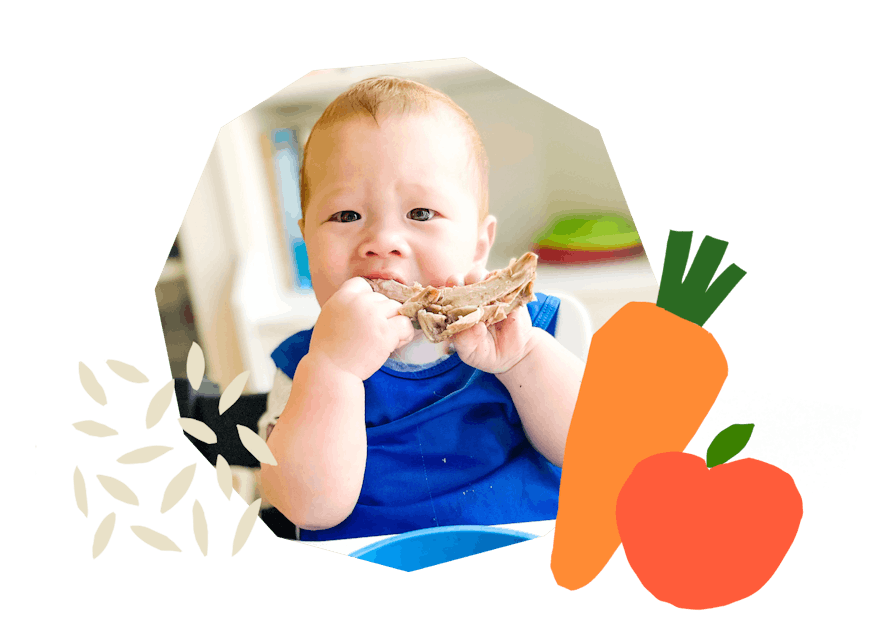
The Program Baby-Led Weaning with Katie Ferraro
A step-by-step digital program for starting solid foods safely and navigating the original 100 FIRST FOODS™ meal plan with baby-led weaning.
 EXPERT-LED, PROVEN APPROACH TO EATING REAL FOOD
EXPERT-LED, PROVEN APPROACH TO EATING REAL FOOD CONCISE VIDEO TRAININGS TO MASTER BABY-LED WEANING
CONCISE VIDEO TRAININGS TO MASTER BABY-LED WEANING 100 FIRST FOODS DAILY MEAL PLAN WITH FOOD PREP VIDEOS
100 FIRST FOODS DAILY MEAL PLAN WITH FOOD PREP VIDEOS
Baby-Led Weaning for Beginners Free Workshop
Is your baby ready to start solid foods, but you’re not sure where to start? Get ready to give your baby a solid foundation to a lifetime of loving real food…even if you’re feeling overwhelmed or confused about this next stage of infant feeding.
Get baby-led weaning recipes and tips delivered to your email inbox.

